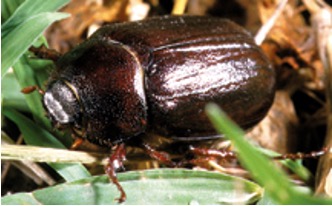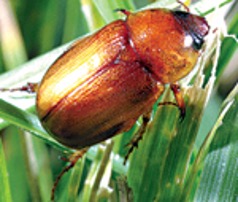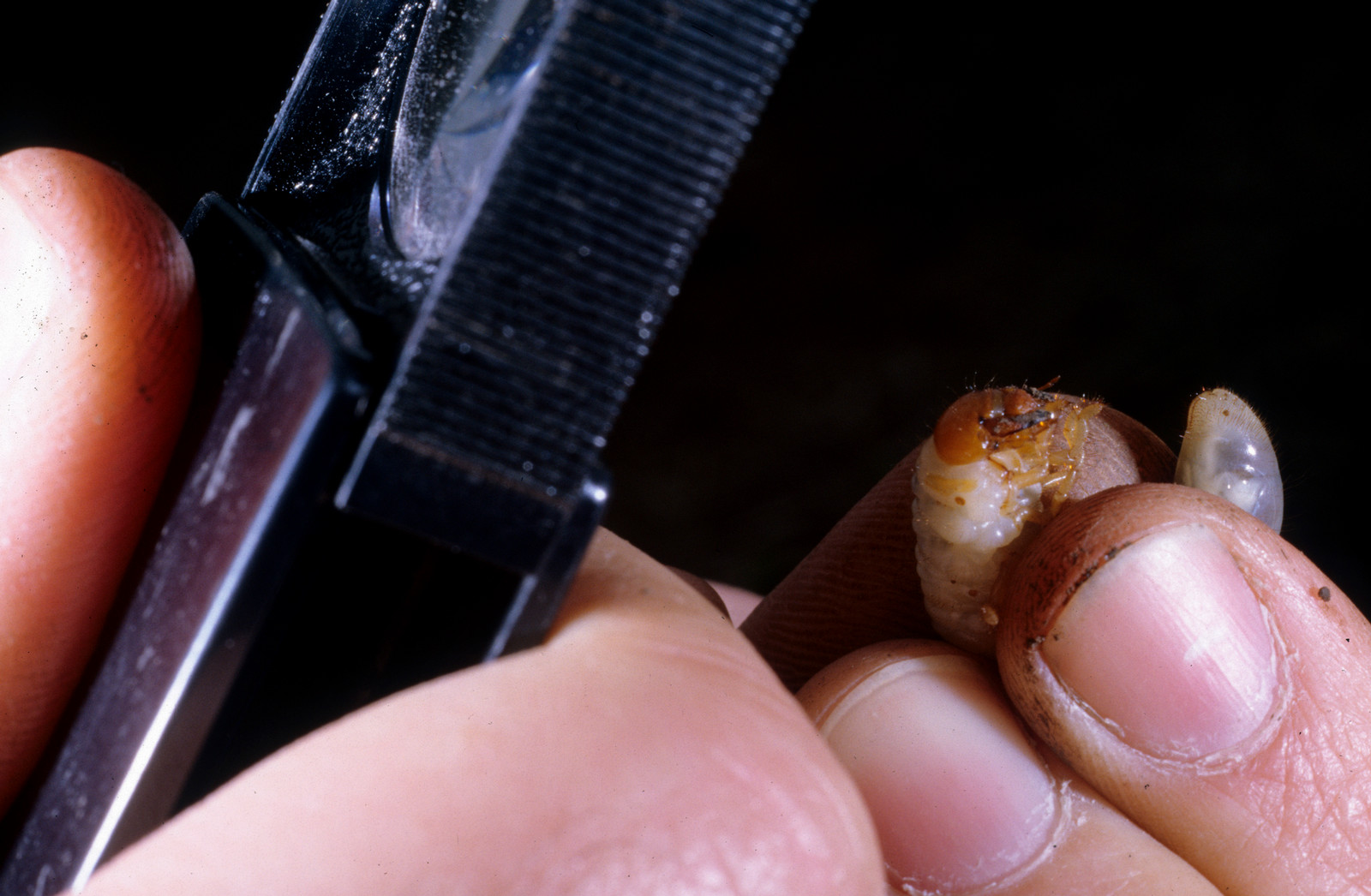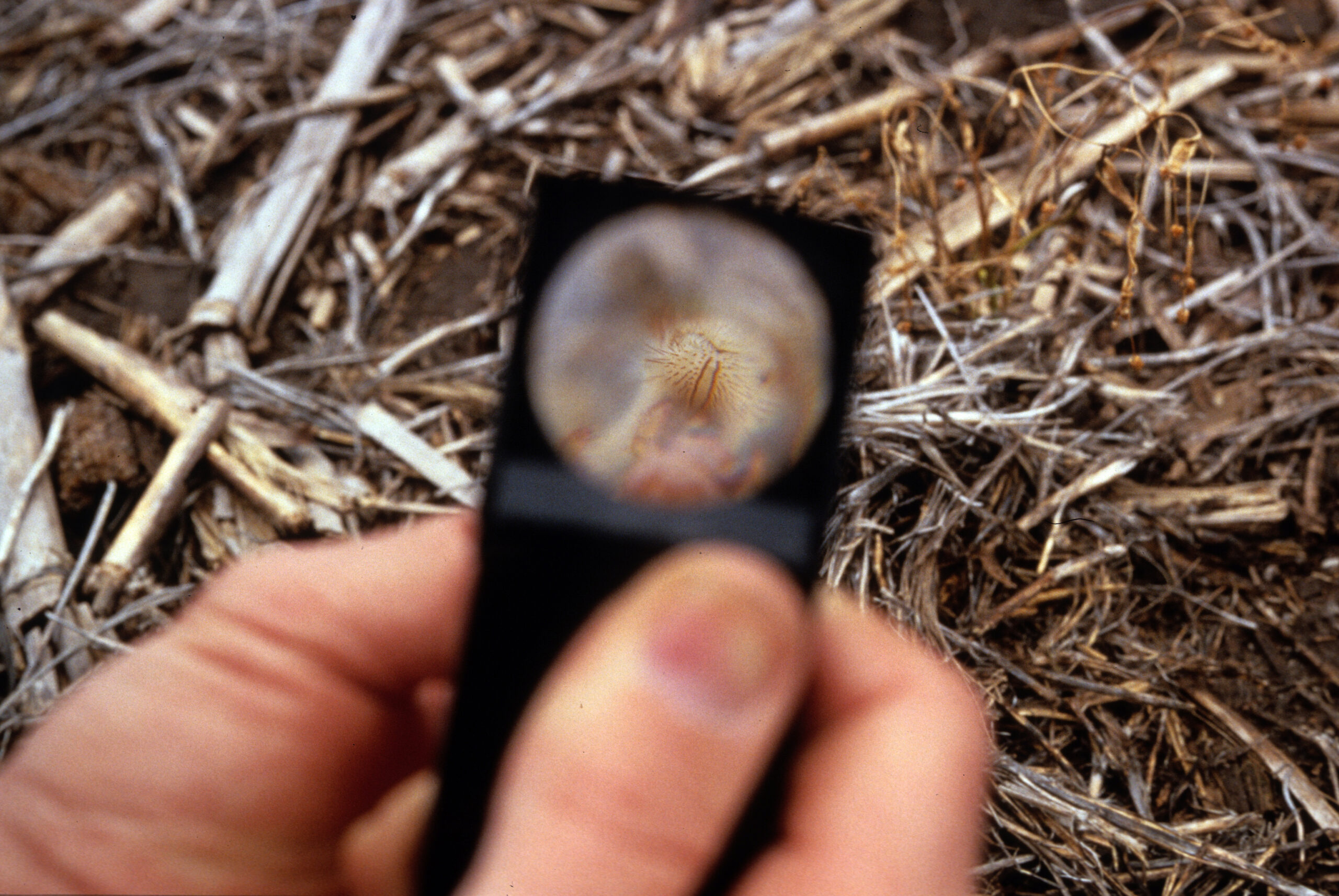White Grubs (Corn)
Phyllophaga spp., Cyclocephala spp., and Popillia japonica Newman
Search the Pest & Crop Newsletter
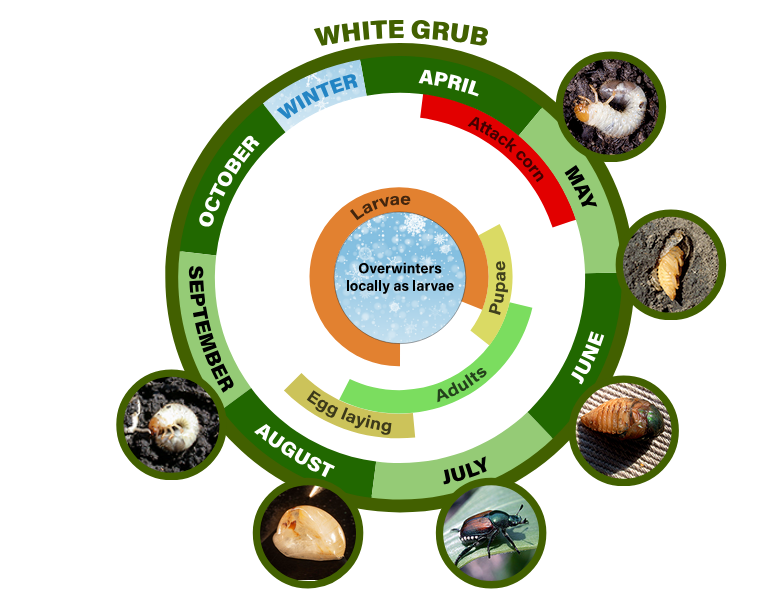
The ability to see these full-sized life-cycle images is currently disabled to resolve an issue.
Appearance and Life History
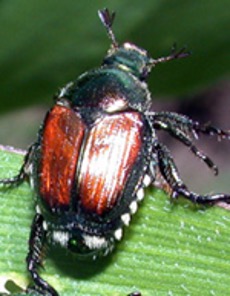
Photo by B. Christine
White grubs are occasional pests of corn seedlings. They most often attack corn fields that were in sod, cover crop, set-aside (May/June beetles, masked chafer, or Japanese beetle), or in soybean (Japanese beetle) the previous season. There are several species of white grubs in the Midwest. Proper identification of species is important because of the differences in life cycles and degree of crop damage.
White grubs are the immature forms of scarab beetles (May/June beetles, masked chafer, and Japanese beetle). The grubs are 1/4 to over 1 inch (6-25 mm) long, and are white with brown heads and have six prominent legs. Their bodies typically are curved into a "C"-shape when found.
May/June beetles have a two to three-year life cycle (grub stage from August through the next year and sometimes during portions of the third year), while masked chafer and Japanese beetle have a one-year life cycle (grub stage from late July through mid-June the following year).
Damage
Damage typically appears as stunted, wilted, discolored, or dead seedlings and/or as gaps in rows where plants fail to emerge. White grubs prune roots and can feed on the mesocotyl causing plant death.
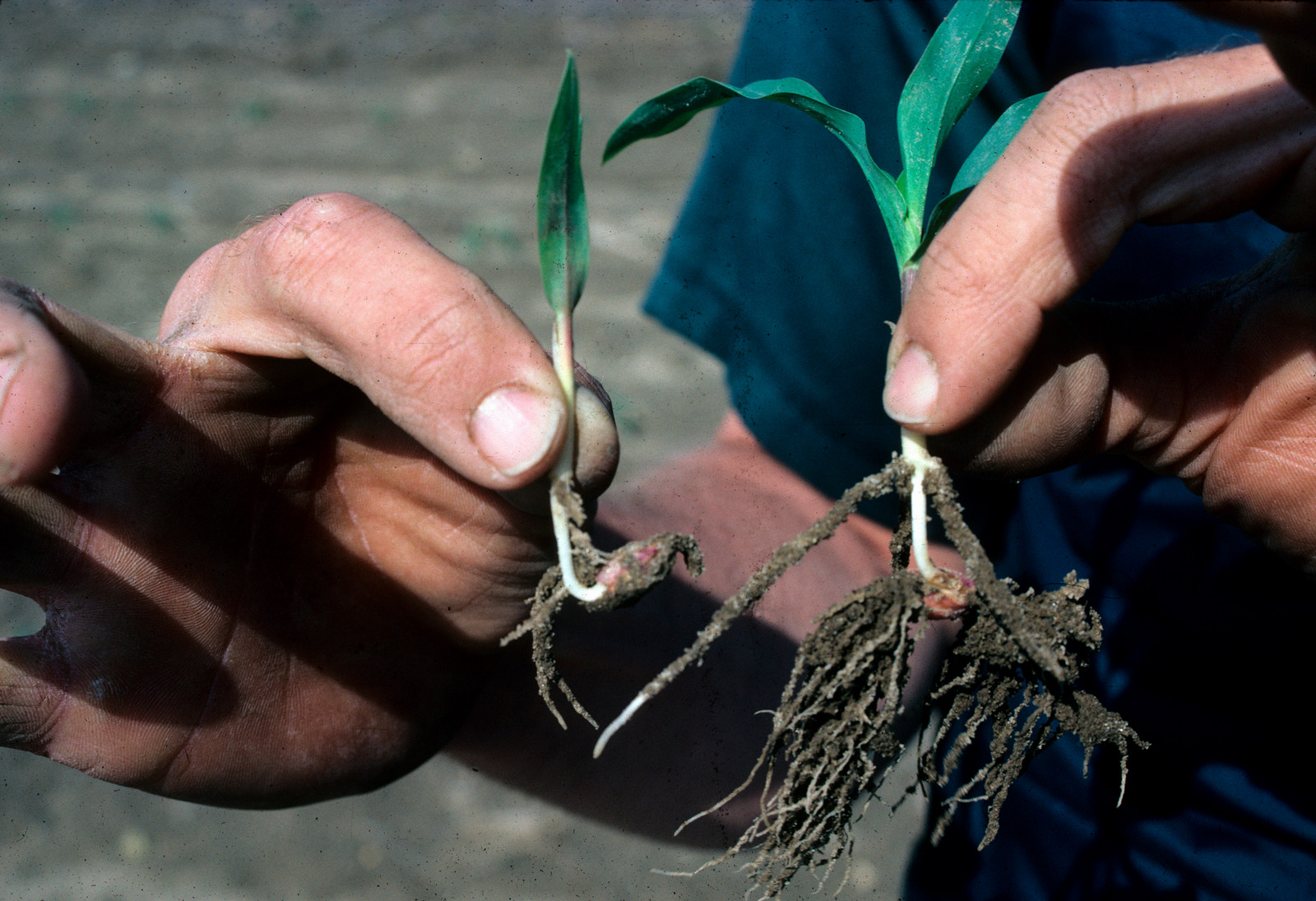
Photo by S. Dlugosz
Sampling Method
- If corn is to be planted into a sod or set-aside field, or a field where Japanese beetle were noted in high numbers the previous season, soil samples should be taken and examined for white grubs before planting.
- 5 randomly selected areas, dig up a 2 feet long by 1 foot wide by 6 inches deep (60 x 30 x 15 cm), 1 cubic foot, sample of soil.
- Place the soil on a piece of black plastic or cloth and search through the soil, counting the number of white grubs found while determining the species.
- Determine the number of grubs per cubic foot.
- Where post-emergence white grub damage is found, look for grubs and damage in 5 randomly selected areas, dig up a 2 feet long by 1 foot wide by 6 inches deep (60 x 30 x 15 cm), area centered over and along the row.
- Place soil and plant samples on black plastic or cloth, look for white grubs and evidence of root pruning.
- stimate the plant stand that remains in the field.
- To determine which species of white grub is present, use the following drawings of rasteral patterns on grubs' posterior ends

Management Guidelines
Corn Insect Control Recommendations: E-series 219-W (PDF)
- Two or more live white grubs per cubic foot of soil prior to planting may signal a potential problem. Some soil applied insecticides are labeled for white grub control, however, control may be erratic. Neonicotinoid seed treatments are also labeled for control, but again, performance is inconsistent. No insecticides are recommended as rescue treatments. If stand reduction, or potential stand reduction is high enough to warrant replanting, a soil insecticide may be needed if the grubs are still actively feeding. Cultural control techniques, such as crop rotation, weed control, mid-season plowing, and even pasturing hogs on infested fields may provide partial control of white grubs.
- White grub problems have been noted in fields where corn follows soybean, fields previously in hay or pasture, or fields which had a late season weed problem the previous year. Such fields should be closely watched during tillage operations for the presence of grubs. Bird activity in freshly worked fields could signal the presence of grubs.
- If fields were infested with grubs the previous year, they could appear throughout the current growing season if they are May/June beetle grubs. If the previous year's problem was caused by masked chafer or Japanese beetle grubs, it is unlikely they will pose a problem after early June.


